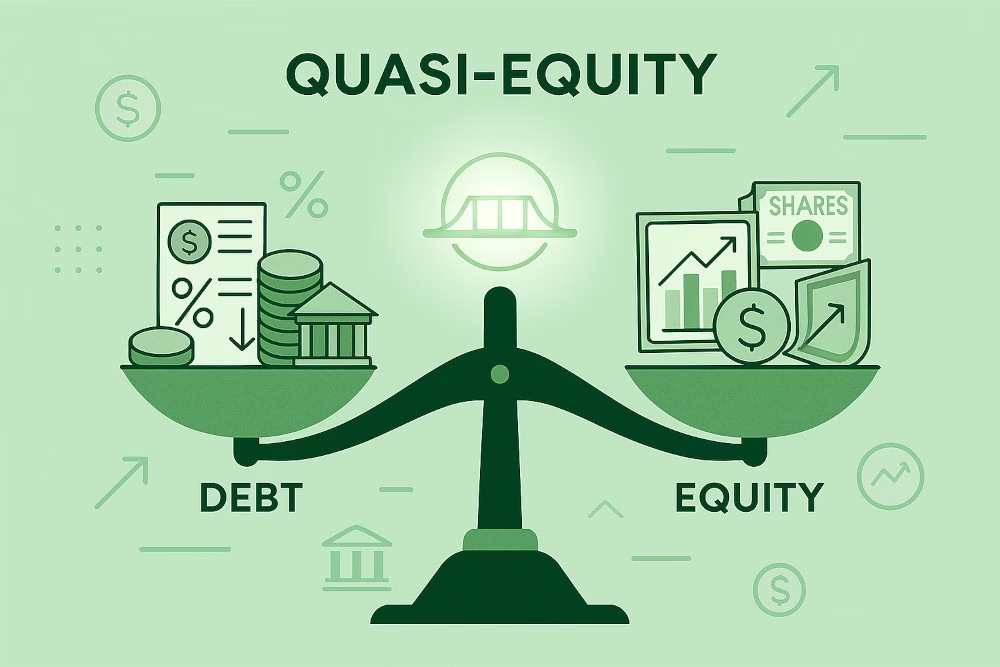Quasi-equity is a type of financing that sits between debt and equity. It behaves partly like a loan and partly like an equity investment, giving funders repayment rights but also some of the upside tied to the performance of the business.
It’s often used when a company is too risky for traditional loans but the owners don’t want to give up too much ownership.
Key Features of Quasi-Equity
- Subordinated debt: Usually ranked below bank loans in repayment priority, but above pure equity.
- Flexible repayment: Repayments may be linked to revenue, profit, or cash flow rather than fixed instalments.
- Return for investors: Instead of just interest, investors may get performance-related returns (e.g., royalties, warrants, or profit participation).
- No immediate dilution: Founders don’t have to give up shares right away (though equity conversion might be possible later).
- Higher risk for lenders: Because repayment depends on business success, quasi-equity usually carries higher costs than bank debt.
Examples
- Revenue-based financing (repayments tied to a % of sales).
- Convertible loans (start as debt but can convert into equity).
- Mezzanine financing (debt with an equity “kicker,” like warrants).
In short: quasi-equity is hybrid financing—riskier than debt for investors, but less dilutive than straight equity for founders.

